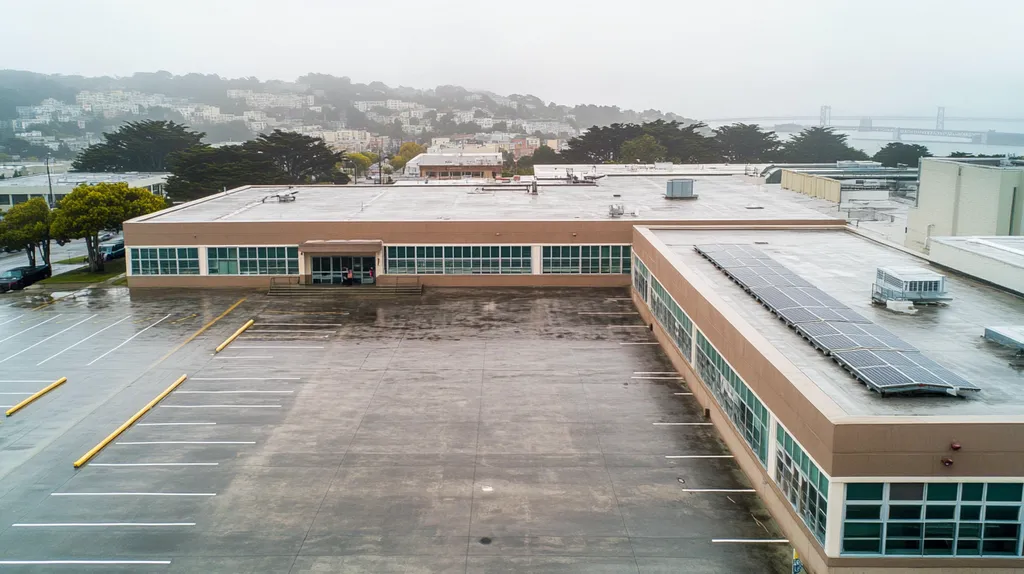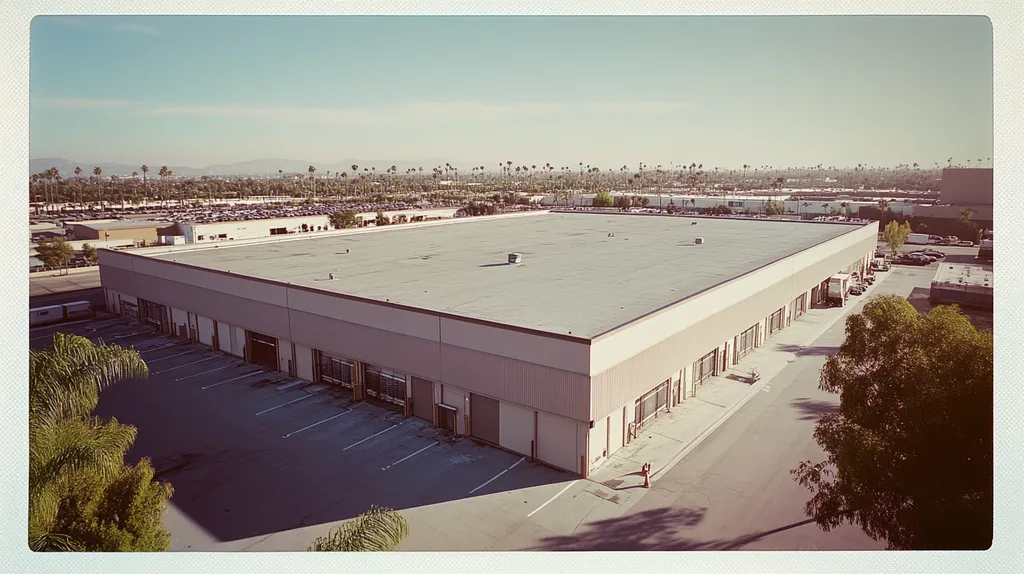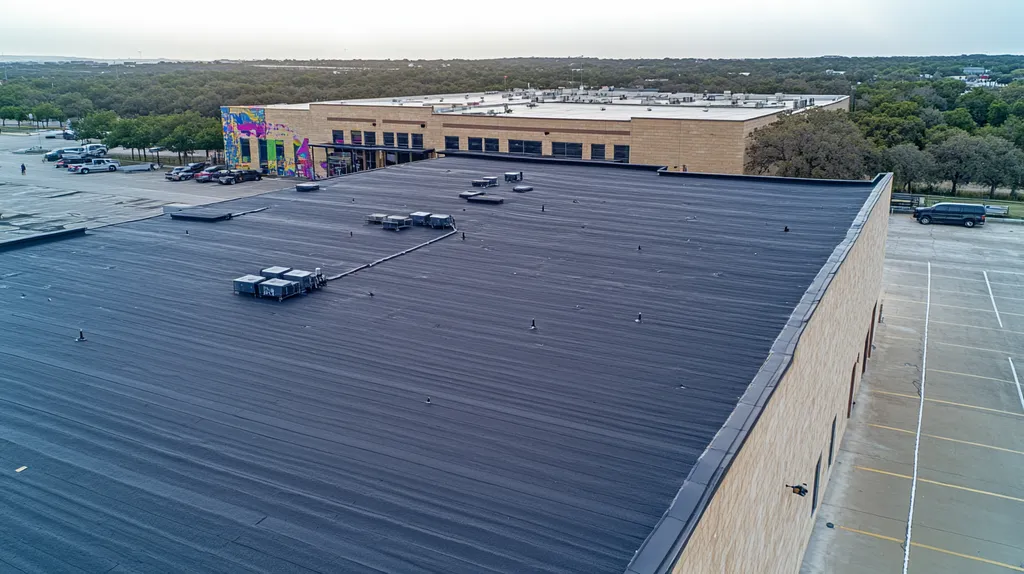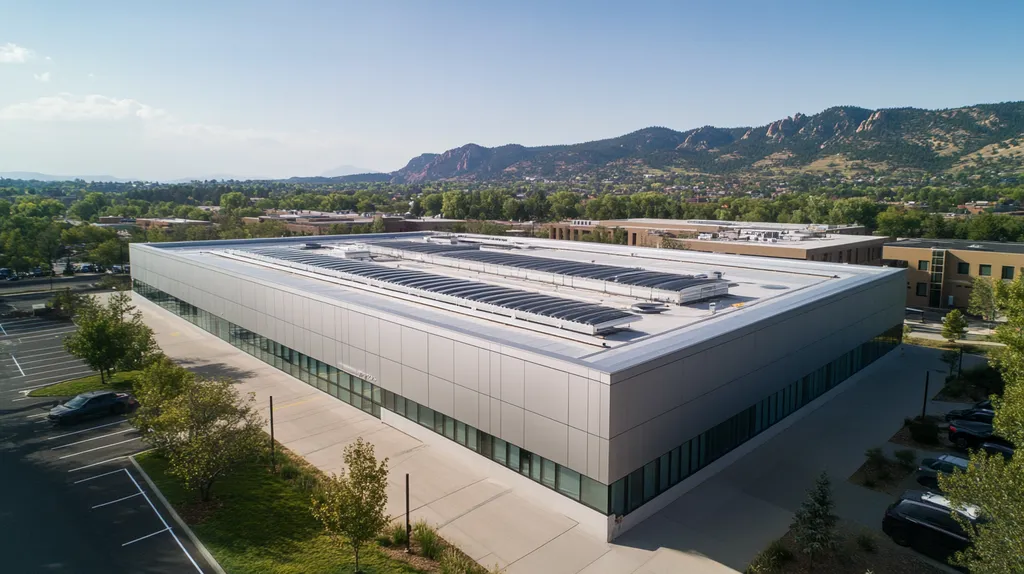In commercial roofing, experience isn’t just a credential—it’s a critical safeguard protecting millions in business assets. Industry data shows that 40% of commercial roof failures stem from inadequate contractor expertise, leading to costly repairs and business disruptions.
For property owners and facility managers, understanding the role of contractor experience is paramount in preventing catastrophic failures. The difference between a contractor with extensive commercial experience versus one with minimal exposure can mean the difference between a 30-year roof life and premature system failure.
This comprehensive guide examines why contractor experience matters, how to evaluate it effectively, and what standards should influence selection decisions.
SECTION 1: THE BASICS EXPLAINED
In the realm of commercial roofing, the stakes are incredibly high. The difference between a stable, long-lasting roof and one fraught with leaks can lead to thousands of dollars in damages and safety hazards. Understanding the fundamentals of roofing experience is essential for property owners. By choosing a reputable contractor, they not only protect their investment but also ensure the integrity and longevity of their building.
What It Is (In Plain Language)
Experience in commercial roofing represents the accumulated skills and knowledge that contractors gain over time. This includes expertise in various roofing materials and installation techniques tailored to different types of buildings. Importantly, it also involves an understanding of local building codes and climate factors.
A contractor with ten years of experience has likely faced numerous roofing challenges. They understand vital factors like effective water drainage and the impacts of thermal expansion. On the other hand, a novice contractor might overlook these critical elements, jeopardizing the roof’s durability.
For property owners, recognizing the value of roofing experience enables them to spot qualified contractors capable of managing projects effectively. This awareness emphasizes the need to choose professionals with a proven track record in similar projects. Experienced contractors can anticipate potential issues, ensuring a smoother installation process.
The advantage of experience is clear: it significantly enhances the overall quality and lifespan of roofing systems.
Why It Matters (To Your Building)
The role of experience in commercial roofing is vital—it directly influences safety and the long-term viability of a building. With an experienced contractor at the helm, property owners can anticipate superior workmanship and strict adherence to safety protocols, which are crucial for protecting everyone inside the facility.
Additionally, seasoned contractors stay up-to-date with the latest industry trends and technologies, allowing property owners to benefit from advanced materials and techniques that boost energy efficiency. For example, using cutting-edge insulation can lead to substantial savings on heating and cooling costs.
Moreover, experienced contractors often have established relationships with trusted suppliers. This access helps them secure high-quality materials while efficiently managing various project aspects. Such collaborations typically result in timely project completion with minimal disruption to daily operations.
In summary, selecting a contractor based on their experience is instrumental in reducing risks and maximizing the lifecycle of the roofing system.
How It Works
Understanding how a contractor’s experience translates into effective roofing solutions is crucial for property owners. Typically, experienced contractors implement thorough planning prior to commencing any work. This planning phase involves site evaluations, selecting appropriate materials, and establishing realistic timelines.
For instance, they might assess a building’s existing conditions to identify underlying issues that could hinder the new roof’s performance. Addressing these concerns upfront can prevent complications down the line. This proactive approach helps ensure the roofing system operates at its best for years to come.
In addition to careful planning, experienced contractors adapt their strategies to fit the unique challenges of each project. They employ specific tools and methods that cater to the type of roofing system being installed, whether it’s flat, metal, or sloped. Each type comes with its own set of challenges that seasoned professionals can navigate effectively.
Ultimately, contractors with years of industry experience provide invaluable insights. This expertise contributes to a smoother installation process and results in a roofing system designed to withstand the test of time.
SECTION 2: PRACTICAL APPLICATIONS
Commercial roofing decisions carry immense weight, directly affecting operational costs and the safety of everyone inside the building. According to a study by the National Roofing Contractors Association, 60% of business owners reported hiking energy expenses linked to poor roofing conditions. By effectively applying years of roofing experience to real-world scenarios, property owners can sidestep costly blunders and ensure their roofing systems are reliable. This section delves into key roofing applications, crucial moments for intervention, and interactions with other building systems, offering clear insights into effective roofing strategies.
Common Uses & Examples
Experienced contractors understand that roofing systems are not one-size-fits-all; each serves a unique purpose. For example, flat roofs are a popular choice in commercial buildings due to their cost-effectiveness and straightforward installation process. Warehouses and retail stores often utilize flat roofs for their expansive open areas, making them an ideal fit.
Additionally, specialized roofing solutions, such as green roofs, offer not only sustainability but also improved energy efficiency through enhanced insulation. When selecting roofing systems, contractors leverage their experience to recommend specific solutions that align with particular business needs, including reflective membranes designed for warmer climates.
Moreover, durable materials like TPO and EPDM are frequently chosen for their low maintenance requirements and longevity. These attributes are essential in minimizing long-term operational costs, which is paramount for facilities managers who aim to optimize budgeting.
Understanding which roofing system best fits the property’s needs can dramatically influence its performance and lifeline. Experienced contractors bring invaluable insights that help ensure optimal selections.
When You Need It Most
Recognizing the right moments for roofing action is crucial for maintaining building integrity. For instance, if a facility manager spots water stains or mold growth, immediate intervention is vital. These signs often indicate deep-seated roofing problems that, if left unattended, could escalate into costly repairs.
Businesses in regions vulnerable to extreme weather must also prioritize regular inspections following storms. Seasoned contractors are attuned to local climatic conditions and can advise facility managers on optimal times for damage assessments to protect the building effectively.
Seasonal changes are another critical consideration. Upgrading roofing systems before winter is essential to prevent ice dam formation, which can compromise structural integrity. Being vigilant about these key maintenance moments is vital in prolonging both the roof’s lifespan and the operational efficiency of the business.
In summary, the ability to recognize when roofing issues arise ensures timely management, safeguarding both investments and productivity.
Interactions With Other Systems
A commercial roof functions in concert with various building systems, including HVAC and drainage. Experience plays a key role in understanding these vital interactions. For example, effective roof designs must accommodate HVAC installations to ensure proper airflow, preventing energy inefficiencies that can inflate costs.
Moreover, an efficient drainage system is pivotal in averting water pooling, which can lead to significant damage to roofing materials over time. Experienced contractors stress the importance of integrating high-quality drainage solutions within the roofing system to ensure all components work seamlessly.
Additionally, roofs equipped with solar panels can provide significant energy savings. Knowledgeable contractors can evaluate how to install solar systems without compromising the roof’s integrity or warranty, reinforcing their commitment to maximizing roof functionality.
In conclusion, understanding how roofing systems interact with other building components enhances their effectiveness and extends their longevity. This integrated approach is not just a detail; it is a fundamental aspect of delivering dependable, long-lasting roofing solutions.
SECTION 3: KEY TERMINOLOGY DECODED
Grasping roofing terminology is essential for property owners and facility managers who want to make sound, informed decisions. Misunderstanding terms can lead to costly mistakes, inadequate maintenance, or subpar roofing solutions that jeopardize the integrity of a building. Knowing the right language of the roofing industry is the first step toward safeguarding your investments. This section will decode key roofing terms, simplify industry jargon, and clarify measurement units.
Essential Terms Explained
Familiarity with key roofing terms can significantly impact project outcomes. For example, “substrate” describes the layer under the roofing material, which is vital for assessing how well a roof withstands moisture and temperature fluctuations. Another vital term is “flashing,” which plays a critical role in preventing water seepage where different materials meet. Understanding these concepts enables property owners to communicate their needs more effectively with contractors.
Equally important is the concept of “insulation,” affecting energy efficiency and directly influencing utility bills. A roof’s “pitch” or slope determines drainage capability and overall roof durability. By grasping these essential terms, property owners can better evaluate contractor proposals and make informed decisions.
Another crucial term is “R-value,” which measures insulation effectiveness; a higher R-value indicates better temperature protection. Knowing these terms equips property owners to advocate for suitable materials during design and construction, ultimately leading to a more efficient roofing system.
In essence, understanding these essential terms not only facilitates communication but also empowers property owners to take a proactive role in their roofing projects, enhancing their investment’s longevity.
Industry Jargon Translated
Industry jargon can be alienating for those outside the roofing field. Terms like “TPO” and “EPDM,” though vital for understanding material options, often confuse property owners. TPO stands for Thermoplastic Polyolefin, a single-ply membrane celebrated for its energy efficiency. Conversely, EPDM refers to Ethylene Propylene Diene Monomer, a durable synthetic rubber often chosen for low-slope roofs.
Additionally, the term “drainage systems” describes methods for managing water runoff. An efficient drainage system is crucial for preventing water accumulation, which can cause significant roof damage. Understanding this jargon allows property owners to ask informed questions during consultations.
Another commonly used term is “roofing assembly,” which covers all components of a roofing system, including insulation, membranes, and protective layers. Recognizing these components helps property owners understand the scope of projects and the importance of each element for long-term performance.
Deciphering such jargon empowers property owners to engage confidently with roofing professionals. This clarity fosters better communication and ultimately leads to superior project outcomes.
Measurement & Units Simplified
In the roofing world, measurement units are critical for effective project planning and material selection. The most common unit is the square, which covers an area of 100 square feet. Understanding how to calculate squares enables property owners to accurately assess material costs. For instance, if a roof measures 2,000 square feet, it translates to 20 squares.
Another essential measurement is “pitch,” expressed as a ratio, such as 4:12. This means the roof rises four inches for every twelve inches of horizontal run. Knowledge of pitch is vital when selecting materials since steeper roofs often require different installation techniques.
Additionally, “gutter size” is typically measured in inches, commonly ranging from 4 to 6 inches wide. The size influences how effectively a gutter manages rainwater runoff, making it a critical factor in the roof’s performance.
Being familiar with these key measurements and units allows property owners to communicate more efficiently with contractors, ensuring a clearer understanding of project scope, costs, and specific requirements.
SECTION 4: DECISION FACTORS
When property owners contemplate roofing solutions, the stakes are remarkably high. Decisions made at this stage can have lasting consequences, such as costly repairs or minor inconvenience, which can quickly spiral into operational disruptions. Research indicates that 30% of commercial roofs experience premature failures due to insufficient planning. Key factors to consider include costs, performance, lifespan, and durability. A solid understanding of these elements is essential for making smart roofing choices that protect both the building and the budget.
Cost Considerations
Cost is typically the first consideration for property owners selecting a roofing system. While initial costs may grab attention, they rarely reflect the complete picture. For instance, opting for a low-cost roofing solution might lead to frequent repairs, resulting in higher expenses over time.
Property owners should weigh both upfront investments and ongoing maintenance costs. Spending a bit more on high-quality materials can translate into significant savings in the long run. For example, premium membranes can reduce repair frequency, thereby safeguarding an investment.
Additionally, many roofing systems are designed with energy efficiency in mind, potentially lowering utility bills and offsetting the initial expense. Understanding the overall cost of ownership is crucial for making an informed financial choice that aligns with long-term objectives.
In conclusion, property owners must balance initial costs and long-term expenses to avoid budget overruns while effectively managing their assets.
Performance Trade-offs
Performance represents another vital consideration when selecting a roofing system. Different materials offer varying reactions to environmental factors, influencing their overall effectiveness. For instance, while some materials provide excellent thermal insulation, others may be more vulnerable to weather-related wear.
The right roofing material can lead to significant energy savings throughout the year. A reflective roof, for example, minimizes heat absorption, making it especially beneficial in warmer climates.
Moreover, roofing system performance directly impacts safety and functionality. It’s crucial to choose a roof that endures local weather conditions—whether that’s heavy snowfall or intense UV exposure—to minimize damage and maximize effectiveness.
Ultimately, understanding the performance trade-offs among various roofing options enables property owners to select a solution that satisfies their immediate and long-term performance goals.
Lifespan & Durability Factors
The lifespan and durability of a roofing system are pivotal aspects that affect overall value. Roofing materials come with warranties reflecting their expected longevity, with some lasting as little as 20 years while others can endure 40 years or more.
Durability is directly related to a roof’s ability to withstand harsh conditions. For instance, a well-constructed metal roof offers excellent resilience against severe weather, such as hail and high winds, which not only extends its lifespan but also minimizes maintenance needs.
Moreover, property owners should consider industry certifications that signify exceptional durability. Selecting a roof validated by industry standards ensures it can withstand the challenges of real-world conditions over time.
In summary, investing in a durable roofing system not only protects property owners’ assets but also allows them to traverse various conditions confidently, all while ensuring a sound return on investment.
SECTION 5: COMMON CHALLENGES
Commercial roofing is fraught with distinct challenges that can significantly affect both the lifespan of a building and its operational efficiency. Failing to conduct proper maintenance or to heed critical warning signs can escalate into costly repairs and prolonged disruptions. Alarmingly, roof-related issues account for around 30% of all facility management costs. For property owners and facility managers, grasping these challenges is vital to safeguarding their investments and ensuring a hassle-free environment.
Frequent Problems & Solutions
Water damage from leaks is among the most prevalent concerns in commercial roofing. Such leaks can severely compromise insulation and lead to hazardous mold growth, jeopardizing both structure and health. Conducting regular inspections and implementing immediate repairs can dramatically mitigate these risks, preserving the building’s integrity.
Another common issue is the degradation of roofing materials caused by UV exposure and weathering, often seen as cracks or blisters. Using reflective coatings and ensuring effective drainage systems can significantly extend the lifespan of the roofing system, providing a longer-term solution to wear and tear.
Punctures and tears frequently occur, often due to maintenance activities or debris impact. By installing protective measures like walkway pads and educating staff on roof access protocols, property owners can prevent these issues. Addressing these challenges promptly not only boosts the roof’s reliability but also minimizes expensive long-term costs and interruptions.
Warning Signs To Watch For
Being vigilant about warning signs is essential for preventing costly repairs. Water stains on ceilings or walls signify potential leaks that demand immediate attention. Detecting these signs early can rescue the roof and the building from extensive damage.
Keep an eye on excessive granule loss from roofing materials, especially asphalt shingles. This loss decreases the roof’s overall effectiveness and its ability to resist leaks. Regular inspections are crucial for identifying this issue and ensuring the roof maintains its protective capabilities.
Sagging roof sections are a clear indication of structural compromise, often resulting from trapped water. Immediate professional assessment is essential to address safety hazards and prevent further deterioration. Recognizing these early warning signs can result in timely management and safeguard the building’s overall condition.
Preventative Approaches
Employing a proactive maintenance strategy is key to overcoming common roofing challenges. Regular inspections, ideally twice a year or after severe weather, can identify emerging issues before they become substantial. This preventative approach conserves resources and enhances operational efficiency.
Establishing a routine cleaning schedule is also essential. Clearing away debris, leaves, and obstructions from roofing and drainage systems can prevent water pooling and its associated damage. These simple yet effective maintenance tasks can significantly extend the life of a roof.
Investing in high-quality materials is equally critical for enhancing roof longevity. While opting for durable, weather-resistant materials may require a higher initial investment, this choice pays dividends by reducing ongoing maintenance and repair costs. By focusing on preventative measures, property owners and facility managers can successfully protect their investments and ensure the robustness of their roofing systems.
SECTION 6: NEXT STEPS & RESOURCES
The stakes for property owners and facility managers are incredibly high when making roofing decisions. Poor choices can lead to damaging leaks, huge repair costs, and even safety hazards that disrupt business operations. It’s crucial to ask the right questions, grasp industry standards, and pursue ongoing education. This section will provide a roadmap with essential inquiries, helpful guidelines, and accessible resources to empower informed decision-making.
Questions To Ask Providers
Engaging a roofing contractor means asking targeted questions that reveal their capability and reliability. Start by exploring past projects and requesting references to gauge their experience level. Understanding the types of materials they use can further clarify their expertise—will they fit your specific needs and conditions?
Ask about their warranty claims process and coverage details. This information provides insight into the long-term protection and support you can expect. Additionally, inquire about their safety record and the training undergone by their workers to ensure your project is managed with safety in mind.
It’s also critical to discuss timelines and project management strategies. A professional contractor should be transparent about start dates, expected completion dates, and challenges that might arise, building trust and clarity throughout the process.
These questions aim to foster a strong working relationship, ensuring that the installation aligns with the specific requirements of your facility.
Industry Standards & Guidelines
Familiarity with industry standards is essential for making educated commercial roofing choices. Organizations like the National Roofing Contractors Association (NRCA) offer guidelines on best practices, covering everything from roofing materials to safety measures.
Compliance with local building codes is equally crucial, as regulations vary by region. Understanding these rules can help avert legal challenges down the road. It’s important to verify that your contractor is well-versed in these local requirements.
Moreover, recognizing industry accreditation programs helps in screening potential contractors. Certification from reputable organizations indicates that a contractor adheres to high-quality workmanship standards, providing peace of mind for property owners.
Staying updated on evolving industry standards ensures that property owners remain compliant and well-informed, empowering them to make decisions that enhance both the durability and reliability of their roofing systems.
Further Learning Simplified
In a constantly evolving industry, ongoing education is essential. Online platforms present a wealth of courses covering everything from basic roofing maintenance to advanced installation techniques, enabling property owners to stay informed.
Participating in webinars and workshops hosted by industry organizations can provide valuable insights. These opportunities allow property owners to grasp current trends and innovations, equipping them to engage meaningfully with roofing contractors.
Additionally, following industry publications and trade magazines keeps stakeholders informed about vital developments and case studies, empowering them to ask pertinent questions and challenge subpar practices.
By actively seeking out learning resources, property owners and facility managers can better manage their roofing projects, contributing to a more efficient and safer industry.
The Bottom Line
With 40% of commercial roof failures linked directly to contractor inexperience, the stakes couldn’t be higher for property owners and facility managers.
The evidence is clear: experienced commercial roofing contractors deliver superior results through comprehensive knowledge of materials, installation techniques, and critical safety protocols.
Industry data shows that buildings with properly installed roofing systems by experienced contractors last 15-20 years longer than those installed by inexperienced teams.
For property owners, the message is unmistakable – contractor experience isn’t just a credential, it’s a crucial investment protection strategy that directly impacts building longevity, operational costs, and occupant safety.
The future of commercial roofing demands nothing less than contractors who bring proven expertise to every project.
FREQUENTLY ASKED QUESTIONS
Q. What is the importance of experience for commercial roof contractors?
A. Experience is crucial as it directly affects the quality of workmanship and overall safety. Contractors with substantial experience have encountered various challenges and understand the best practices for durable installations. This knowledge helps avoid costly mistakes that can jeopardize the lifespan of a commercial roof.
Q. How do commercial roofs impact operational costs?
A. Commercial roofs play a significant role in energy efficiency, directly influencing utility expenses. Poorly maintained roofs can lead to leaks and insulation issues, resulting in increased heating and cooling costs. A properly installed and maintained roof ensures long-term operational savings and minimizes unexpected repair costs.
Q. How important is roof terminology for property owners?
A. Understanding roofing terminology is vital for effective communication with contractors. Familiarity with terms like insulation, flashing, and R-value empowers property owners to ask informed questions and make better decisions regarding materials and techniques, ultimately protecting their investment.
Q. What factors should commercial roof owners consider?
A. Key factors include costs, performance, lifespan, and durability. While initial pricing may be appealing, assessing long-term maintenance and operational expenses is essential. Understanding these factors helps property owners make informed decisions that align with their budget and long-term goals for their roofing systems.
Q. What common challenges do commercial roofs face?
A. Commercial roofs often face challenges like water damage from leaks, material degradation, and punctures. Regular maintenance and prompt repairs are crucial to minimizing risks. Being aware of these challenges can help property owners proactively manage their roofing systems and avoid costly repairs.
Q. What questions should I ask roofing contractors?
A. It’s important to inquire about their experience, past project references, and materials used. Additionally, asking about warranties, safety practices, and project timelines can provide insights into their reliability. This dialogue fosters transparency and confidence in the decision-making process.
Q. How can I stay updated on roofing industry trends?
A. Stay informed by participating in webinars, workshops, and online courses related to roofing. Following industry publications and trade magazines also helps you grasp new technologies and trends. Engaging with local roofing associations can provide valuable resources and networking opportunities for ongoing education.











